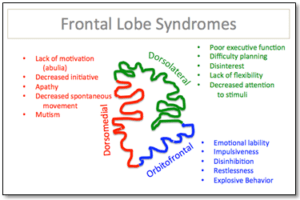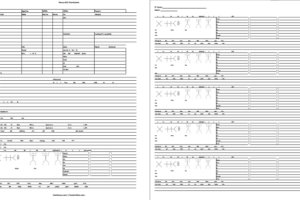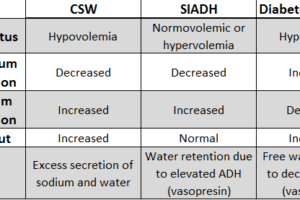Cervical radiculopathy describes mechanical nerve root compression or intense inflammation, i.e, chemical radiculitis, that affects nerve roots as they exit the spinal foramen. Loss of disc height through aging and age-related foraminal width decrease may cause such impingement. The cervical region accounts for roughly a third of all radiculopathies. Incidence of cervical radiculopathies by nerve root level are C7 (70%), C6 (19-25%), C8 (4-10%), and C5 (2%).
Disc abnormalities may be divided into type: disc bulge, protrusion, extrusion, and sequestration. Symmetric extension of the disc margin beyond the endplate margins is described as bulge. Herniation of nuclear material through a defect in the annulus is described as protrusion. Herniation of nuclear material with the formation of an anterior extradural mass is described as extrusion.
Patients should be questioned about the nature of the onset of their pain, time since injury, mechanism of injury, and any signs of systemic illness, i.e. weight loss that would imply malignancy, fever that would imply infection. One kind of pain, a vague, diffuse axial type pain, is suggestive of a discogenic origin but without nerve root involvement. Another factor that implicates a discogenic origin is a history that activities increasing intradiscal pressure such as lifting, valsalva maneuver, etc intensify the symptoms and lying supine reduces them. Driving, with its vibrational stress, also worsens pain from cervical disc disease.
The character of radicular pain is deep, dull, and achy or sharp, burning, and electric. Since it originates from nerve root involvement, it follows a dermatomal or myotomal pattern into the upper limb. Frequently, neck pain does not accompany radiculopathy. A pattern of distal limb numbness and proximal weakness is not uncommon. Muscle atrophy may be present in the face of a long standing abnormality.
It is possible for patients to present with symptoms that would appear to be in the lumbar spine. However, this condition is actually a presentation of upper motor neuron signs that originated from degenerative disease at the cervical level. This is an indication for prompt surgical intervention.
By doing a very thorough neurological examination of the upper extremities, it is possible to gain a fair idea of where a lesion is situated. However, one of the limitations of such an exam is that it cannot take into account the mild variability that exists between patients with relation to exactly where a nerve root exits through the foramina. Consequently, some form of radiological visualization will be required, even though a detailed clinical picture has been assembled.
At one time, the gold standard for imaging anatomy was cervical myelography—proceeded by plain films to rule out fractures, etc. That has now changed and MRIs are considered the method of choice for visualizing the neck. However, there are studies that suggest that CT scan with myelography still plays a role.
When considering the course of evaluating cervical radiculopathy, radiographs of the cervical spine are the first diagnostic because they are helpful in detecting fractures and subluxations in patients with a history of neck trauma. In these patients, lateral, anterior-posterior, and oblique views should be ordered. An open-mouth view will also rule out injury to the atlantoaxial joint. It is important to visualize all 7 cervical vertebrae, if C-7 can not be properly seen, a “swimmer’s view” should be obtained
National guidelines have been established for treatment of cervical disc disease that outline the role of the numerous treatment modalities. These modalities, that include facet or zygapophysial joint diagnostic blocks, Provocation Discography, Transforaminal Epidural Injections, Epidural Injections, and discectomies, with and without laminectomies, with and without fusion. Indications, success rates, and efficacy of treatment modalities continue to be debated and guidelines continue to be changed.



